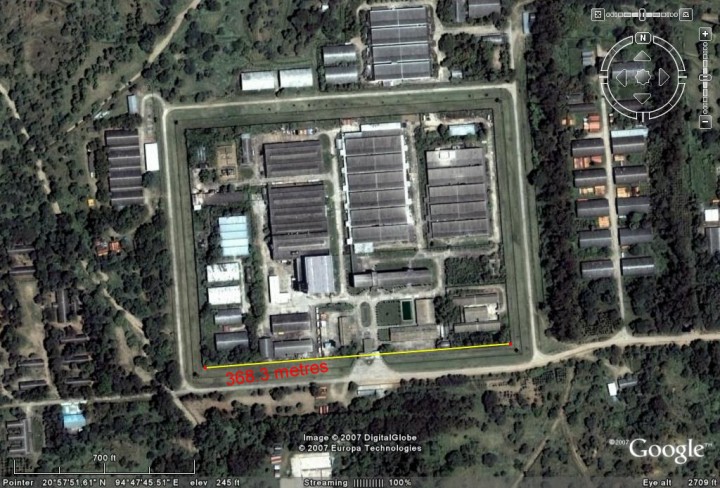IMAGES
OF SUSPECTED URANIUM MINE AND REFINERY IN BURMA
March 2007
Image source: Sasu Yin
The following photos show a large open pit mine, and a related ore refinery
just to its south. The refinery lies on the Myit Nge River 14.5 miles southeast
of Mandalay and 17.7 miles northeast of Kyaukse. The closest village is Ongyaw
north of the mine. A new road to the refinery is under construction.
We believe this may be a uranium operation. The mine could be a massive quarry,
for materials for all the airport and road construction that is now underway
in Burma. However, a gravel mill would be much smaller, with fewer structures.
Also, some of the structures clearly seem intended for mineral leaching, a
common feature of ore refineries.
The refinery is similar to the Ranger Uranium Treatment Plant in Australia.
One difference, though, is that the Ranger plant has obvious thickening tanks.
These are missing in the Burma facility. But, such tanks are not always apparent
in aerial photographs of known uranium mills; they could be under roof.
We have not been able to find any public reference to this site. It is not
included in the 2004 Mineral Industry in Burma, the latest available
survey from the U.S. Geological Service. It also is not mentioned in recent
news accounts of mining in Burma, or the reports of mining activist groups.
It is an unknown and apparently secret facility, although its scale, including
of the financial investment required, is huge.
This is a region where Burma’s “Nuclear Battalion” is reported
to operate. There is also a possibility that it includes, or will include,
an associated reactor, although there is no obvious reactor building. However,
the smokestacks are similar to the stack at the 5mw Yongbyon reactor in North
Korea, in that they rise directly from the ground and with no obvious connection
to an effluent source.
The complete uranium cycle is: mine; refinery/mill; enrichment; use in a reactor
or nuclear weapons program. If this facility is producing uranium yellowcake,
obvious enrichment program customers include North Korea, with whom Burma’s
junta, the SPDC, is known to have close contacts; Iran, whose Foreign Minister
recently visited the country; and also Russia and China, both of which are
in the market for uranium supplies. The SPDC itself could be using the yellowcake
for its own enrichment program, if the report of such a facility at the South
Nawin Dam is correct.
It is inconceivable that intelligence agencies do not know about this facility,
including its customers. If it is uranium, it confirms that the SPDC is a
threat to international security and peace, as an integral component of the
threats posed by North Korea and Iran, and also since the yellowcake could
easily be sold to terrorists for use in a “dirty bomb.”
The final four photos are of a facility in the town of Chauk, on the Irrawaddy
River north of Magwe; and of another facility in Lanwya, a few miles further
north. Chauk is known to have an old petroleum refining operation, but the
facility in the close-up photo obviously has a different use. The tanks in
the image may be thickening tanks. The facility at Lanwya, while not a refinery,
is large and clearly top secret. Its purpose is unknown.
Please contact us if you can confirm that the first operation is uranium or
if you have other knowledge of what it might be; or if you have any knowledge
at all about the second and third facilities.
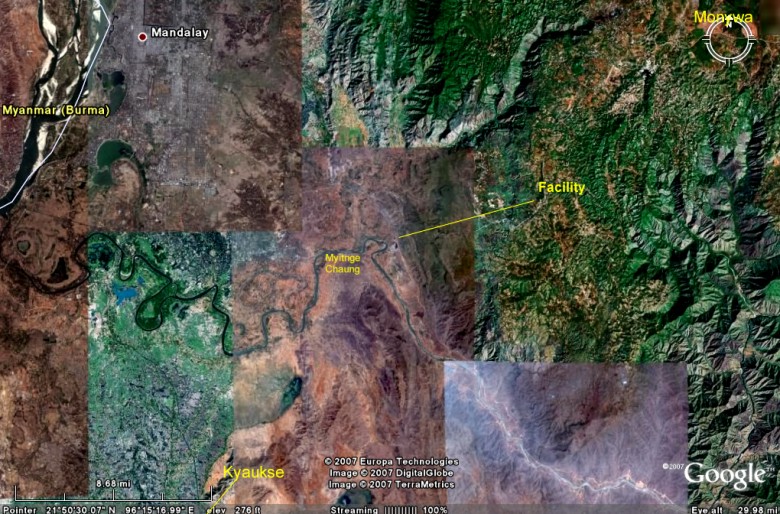
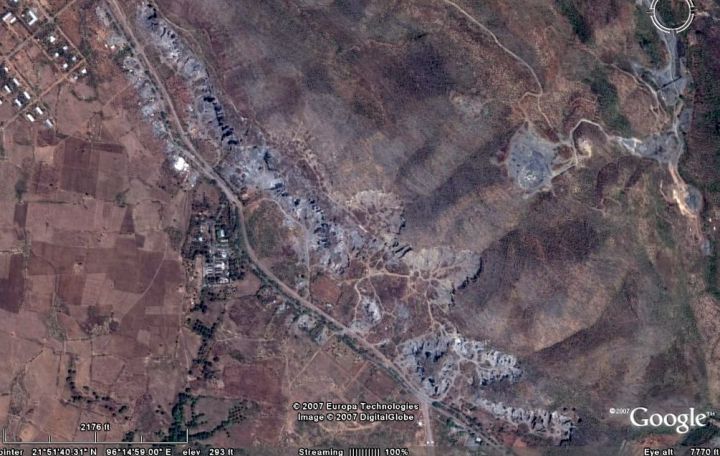
The small white buildings on the road at the bottom of the photo are checkpoints.
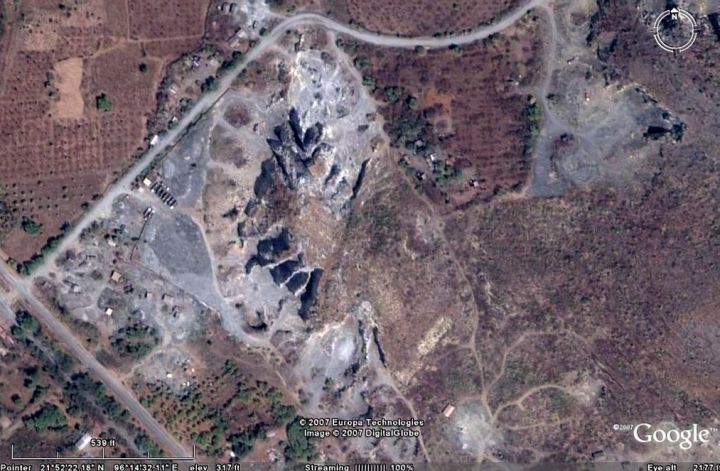
A close-up of a small part of the overall mine.
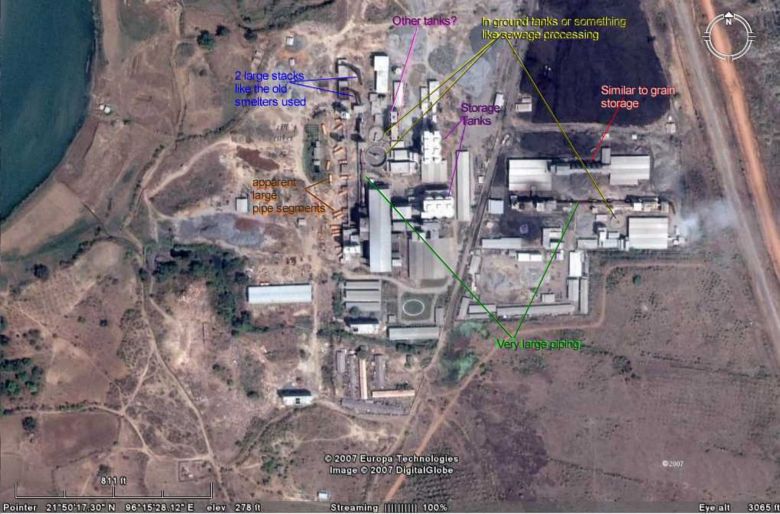
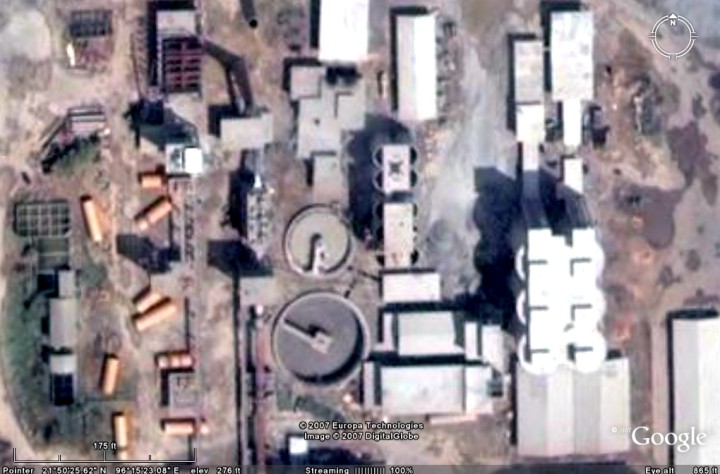
The smokestacks are approximately one hundred feet tall.
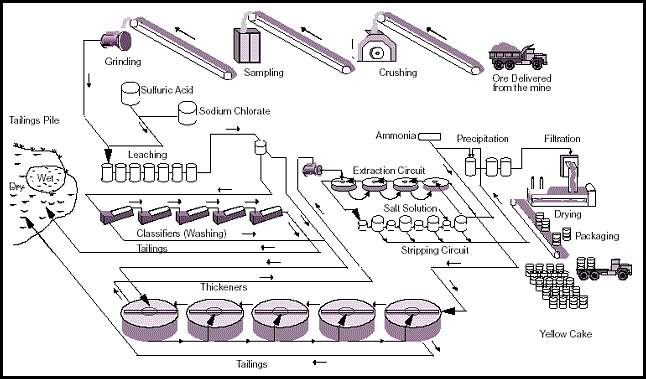
A schematic of a uranium mill.
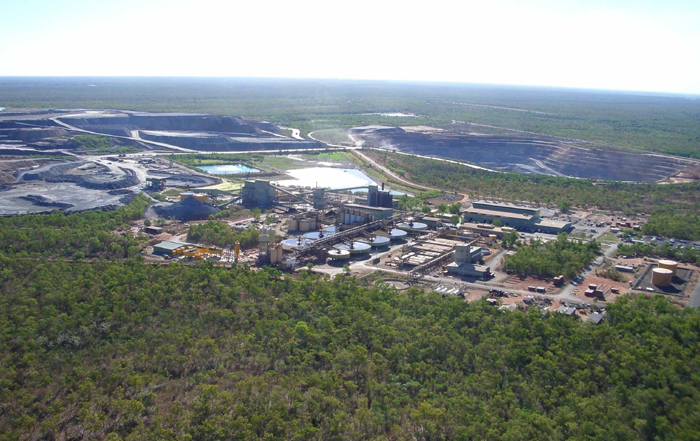
The Ranger Uranium Treatment Plant in Australia.
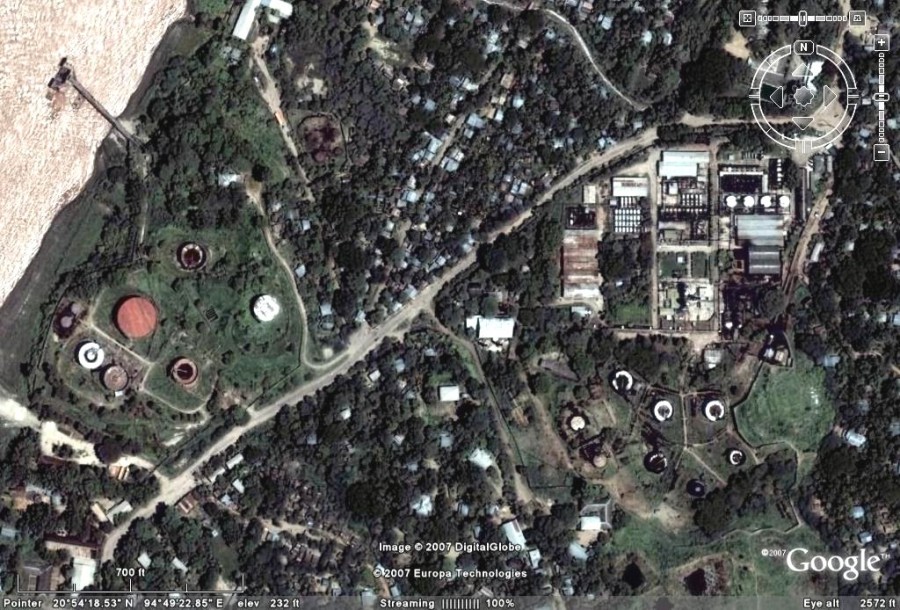
The Chauk facility.
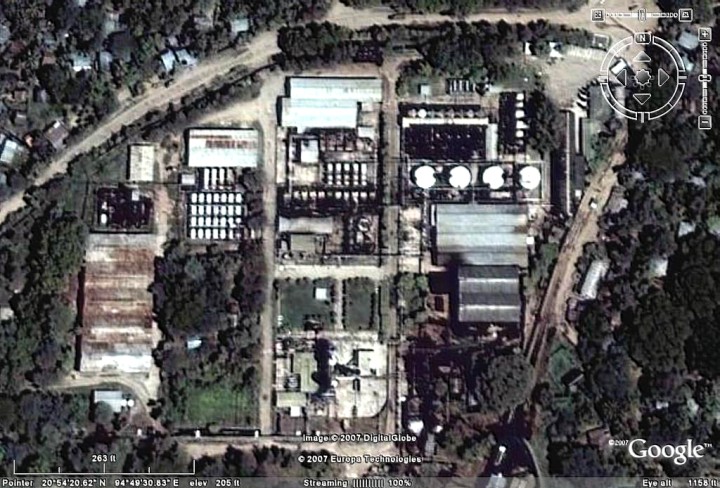
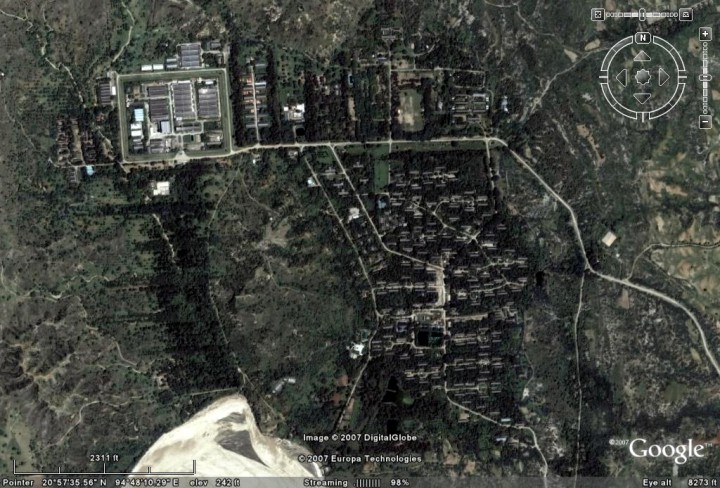
The Lanwya facility.
